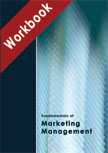Coca-Cola India in 2004 - Marketing Strategy |
ICMR HOME | Case Studies Collection Please note: This case study was compiled from published sources, and is intended to be used as a basis for class discussion. It is not intended to illustrate either effective or ineffective handling of a management situation. Nor is it a primary information source. |
||||
Background Note Contd...
Parle's popular brands like Thums Up, Limca, Maaza, Citra and Gold Spot had a 60% market share. Between 1993 and 2000, CCI had five presidents, a clear reflection of the difficulties which the company faced in navigating through a challenging, unfamiliar business environment. During the tenure of the founding CEO, Jayadev Raja (1992-May 1995) and his successor, Richard Nicholas (June 1995- March 1997), the company struggled to establish itself. It was also criticized for neglecting the Parle brands. Donald Short (April 1997-November 1999) streamlined the bottling operations and the supply chain.
3] Iyengar, Jayanti. "Coke forced to play by Indian rules," www.atimes.com, 15th March 2003. |
Case Studies Links:-
Case Studies,
Short Case Studies,
Simplified Case Studies.
Other Case Studies:-
Multimedia Case Studies,
Cases in Other Languages.
Business Reports Link:-
Business Reports.
Books:-
Textbooks, Work Books, Case Study Volumes.



